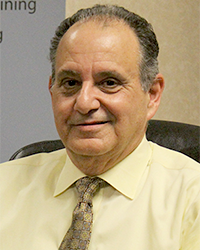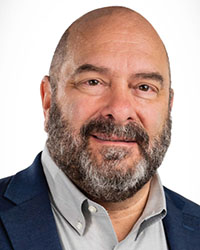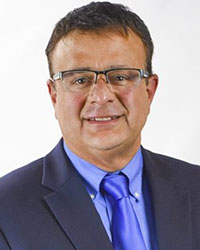YOUNGSTOWN, Ohio – One third of a person’s life is spent at work – that’s 90,000 hours with individuals in a good position to notice behavior that could suggest suicidal ideation.
Twenty people have completed suicide in Mahoning County as of July 15. Eighteen of them were men between the ages of 25 and 83, according to data from the Mahoning County Mental Health and Recovery Board. The other two were 13-year-old boys.
Working-age men are the leading demographic of suicide victims, with the rate of suicide being highest in middle-aged men, according to the American Foundation for Suicide Prevention. Middle-aged people made up 25.1% of the 2019 population but were 31.3% of suicides, according to Save – the Suicide Awareness Voices of Education organization.

Employees may spend more face-to-face time with co-workers and managers than their own family and friends. By learning the warning signs and risk factors and by having mental health resources available, employers and colleagues can potentially play a part in preventing what Help Network CEO Vince Brancaccio says is a preventable death.
“Suicide is preventable. Five people die of suicide each day in Ohio. That’s 1,800 families each year that are affected by the death of a loved one – and it’s preventable,” he says.
WARNING SIGNS AND INCREASED RISK

Duane Piccirilli, executive director of the Mahoning County Mental Health and Recovery Board, says absenteeism can indicate that an employee is struggling. Michelle Werth, the board’s clinical director, says absenteeism in response to an extenuating stressor might be cause for concern.
“If you knew that there was some sort of extenuating stressor, you might see some absenteeism. You might see a change in behavior, irritability or talking about wanting to die or feeling hopeless,” Werth says.
Piccirilli adds that men might be at higher risk because of statistics as well as the stigma that prevents some from speaking up.
“Men will not ask for help. And that’s the problem,” Piccirilli says. “Men tend not to ask for help because it almost seems like a weakness, when in fact, we’re trying to show people that it’s not a sign of weakness to ask for help – it’s a sign of strength.”

Lee DeVita, program coordinator for MCMHRB, says the board hopes to “reach men where they’re at.” He says they’d like to put information about resources in areas that men tend to frequent, like in the previews before action movies or in the sports sections of local newspapers.
Paige Eckman, director of integrated health at Meridian HealthCare and licensed social worker and counselor, says a change in typical and routine behavior at the office might be a warning sign, such as an outgoing employee that suddenly isolates and retreats from social situations.

“Isolation is a huge one. And depending on the job, if they’re communicating with people often and then all of a sudden, it’s like they’re just taking a step back and kind of staying in their office and staying in their lane,” she says, adding that poor hygiene can be an indicator as well.
Larry Moliterno, president and CEO of Meridian Healthcare, says that as an employer, he’s watchful of his employees’ attendance and performance.
“We’re always looking for things like a change in attendance. Sometimes work performance is going to be an indicator that there are some other problems,” he says.
Seeing one or more warning signs in an employee who has suffered a significant loss may indicate increased risk. Examples could be a death, divorce, a relationship breakup, loss of child custody, home foreclosure, bankruptcy or job loss. Other risk factors are severe financial stressors, legal problems, an event causing guilt or shame, and substance abuse, according to Cigna, a global health service company.
Other warning signs include: talking or writing about death or dying (one’s own or the topic in general), including social media posts; mentioning having means and/or a plan for self-harm such as access to pills, guns, or other weapons; giving away possessions; asking about life insurance policy details, especially as it relates to cause of death; and showing interest in end-of-life affairs, such as making a will, discussing funeral preferences, etc.
RESOURCES AND GUIDANCE
An employee assistance program (EAP) is an employee benefit program that assists employees with personal and/or work-related problems that may impact their job performance, health, and mental and emotional well-being. An EAP provides a handful of free, confidential counseling sessions to employees.

At the employee’s request or through supervisor referral, an employee can meet with a certified counselor outside of the work environment. There is no cost to the employee for this service.
Meridian Healthcare is a local provider of EAP and Moliterno says the service is invaluable. Approaching an employee about a sensitive topic, like suicide, might make an employer feel like he is encroaching on personal boundaries. An EAP makes it easier to start that conversation.
“I do believe that the EAP services, whether it’s through Meridian or somewhere else, are very valuable services because they allow you as an employer to not get directly involved in the situation,” Moliterno says. “If the person wants to take advantage of that they can. But when trying to cross those boundaries with employees, you’ve got to be really careful.”

If employees needs additional counseling sessions, an EAP can point them in the right direction.
Suicide prevention starts with the right resources, according to Brancaccio. The Help Network offers resources to address issues that put people at higher risk of suicide, such as addiction, food insecurity, homelessness and mental illness.
“Everything we do prevents people from getting to a point where they just want to die. I call it prevention,” he says. “Everything we do is preventing them, I would hope, from getting to that point of despair, that they want to end their life.”
Having resources available to employees, such as the Help Network’s website and information about its programs, is an important step to addressing suicide and mental health in the workplace.
Brancaccio says having information in communal work spaces, like a poster for the Suicide and Crisis Lifeline in the break room, also can make a difference.
The rollout of 988, the new number for the Suicide and Crisis Lifeline, allows individuals struggling with suicidal thoughts or mental health issues to call or text 988 – a number meant to become as widely recognized as 911.
Brancaccio says the new, easily recognized number is an important addition to the nation’s list of resources for struggling individuals. The three-digit number is as memorable as 911, which might prove to save lives in more ways than one.
Brancaccio says 911 is often called when an individual is presented with suicidal ideation or other mental health issues. He says those who call 911 are either trained to do so, like emergency dispatchers, or they don’t know what else to do.
“Most of the 911 dispatch centers, if they get a call from a person who’s suicidal, they’re sending law enforcement,” he says. “We’re saying that’s not what you want to do. You may escalate the situation if you have a person with a gun and a badge showing up.”
Brancaccio says 911 should be reserved for clearly emergencies, such as if an attempt were already made or if there is a weapon readily available to the individual. He says that his employees are able to talk to 95% of people that call the Help Network’s Suicide Hotline and come up with the safety plan.
“Ninety-five percent don’t require an active rescue or first responders – these people are looking for help. That’s why they’re calling. They’re not looking for a police officer,” he says.
Brancaccio recommends that those who are struggling, or someone who is aware of someone who is struggling, call 988 instead. The number can be used to find services as well as a crisis intervention tactic. The Help Network’s number for information and referral; 211, is also a resource.
DeVita says the Help Network can help loved ones navigate a situation with an individual with suicidal ideation.
“If you have a family member that you are thinking might be suicidal, they can walk you through what steps to take and what you can do for that family member. The Help Network is always a great resource,” he says.
From April through June of this year, the Help Network received 14,095 calls from individuals looking for resources in Mahoning County, 1,021 in Columbiana County, 3,723 in Trumbull County and 2,096 in Ashtabula County. The Help Network received a total of 32,397 calls, including calls for its all-county programs and its afterhours phone lines.
COMPANY CULTURE
The American Foundation for Suicide Prevention says that by improving workplace culture, the workplace itself can serve as a protective factor against suicide.
Building a culture of well-being paired with the availability of mental health services and programming, with specific efforts to reduce concerns, will encourage employees to use available mental health services, according to the foundation.
Moliterno says Meridian Healthcare encourages its employees to take paid time off to avoid burnout.
Burnout is often caused by “hustle culture,” which Psychology Today defines as a dangerous phenomenon with unrealistic work expectations, often supported and reinforced through social media. Employees that feed into hustle culture might think it’s weak to take time off or to work only the required 40 hours.
“When we do see somebody that is just looking burnt out and like they need a break, we do encourage them to take some time off. And we offer the EAP services,” Moliterno says. “Just having those general discussions, like, ‘Alright, you’re leaving work. What do you have planned tonight? What are you going to do for yourself? What are you doing this weekend so you could take your mind off work?’”
Creating policies that support emotional wellness and promoting mental and behavioral health as part of overall corporate wellness are both ways to show employees that their mental health is a priority, according to the American Foundation for Suicide Prevention.
Cultivating a company culture that values mental health and that allows for open and honest communication is the first step to suicide prevention in the workplace.
Meridian’s Eckman encourages employers to be present with their employees and get to know them.
“Take the time to talk to your employees. Be aware of their behaviors. Be aware of who they’re spending their time with around the workplace. You can help prevent somebody completing suicide just from showing you’re interested in them and that you care,” she says.
“Maybe that’s the one moment when they’re willing to talk. And you never know when that moment is going to be.”
